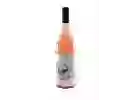
Winery LandaisD'Une d'Or Moelleux
This wine generally goes well with
The D'Une d'Or Moelleux of the Winery Landais is in the top 10 of wines of Landes.
Details and technical informations about Winery Landais's D'Une d'Or Moelleux.
Discover the grape variety: Rivairenc
Rivairenc noir is a grape variety that originated in France (Languedoc). It produces a variety of grape specially used for wine making. It is rare to find this grape to eat on our tables. The Rivairenc noir can be found in several vineyards: South-West, Cognac, Bordeaux, Languedoc & Roussillon, Provence & Corsica, Rhone Valley, Loire Valley, Savoie & Bugey, Beaujolais.
Informations about the Winery Landais
The Winery Landais is one of of the world's greatest estates. It offers 97 wines for sale in the of Landes to come and discover on site or to buy online.
The wine region of Landes
The wine region of Landes is located in the region of Comté Tolosan of Vin de Pays of France. Wineries and vineyards like the Domaine Laballe or the Domaine Laballe produce mainly wines sweet, red and white. The most planted grape varieties in the region of Landes are Cabernet franc, Tannat and Cabernet-Sauvignon, they are then used in wines in blends or as a single variety. On the nose of Landes often reveals types of flavors of grapefruit, tropical or peach and sometimes also flavors of minerality, earth or vegetal.
The wine region of Comté Tolosan
Comte Tolosan is a PGI title that covers wines produced in a large area of Southwestern France. The PGI basin encompasses 12 administrative dePartments and is home to a wide range of appellations d'origine contrôlée (AOC) such as Jurançon, Cahors and Armagnac. The IGP label provides a geographical classification for wines that are not classified for AOC level appellations due to Grape variety or winemaking style. The region is part of the Aquitaine basin - the plains that lie between the Pyrenees, the Massif Central and the Atlantic Ocean to the west.
The word of the wine: Extraction
All the methods (pumping over, punching down) that allow the colour and tannins to be extracted from the grape skin during maceration, before fermentation begins. It is also possible to macerate after fermentation, but gently, so as not to extract the tannins from the seeds, which are greener. Because of its solvent power, alcohol favours extraction.











